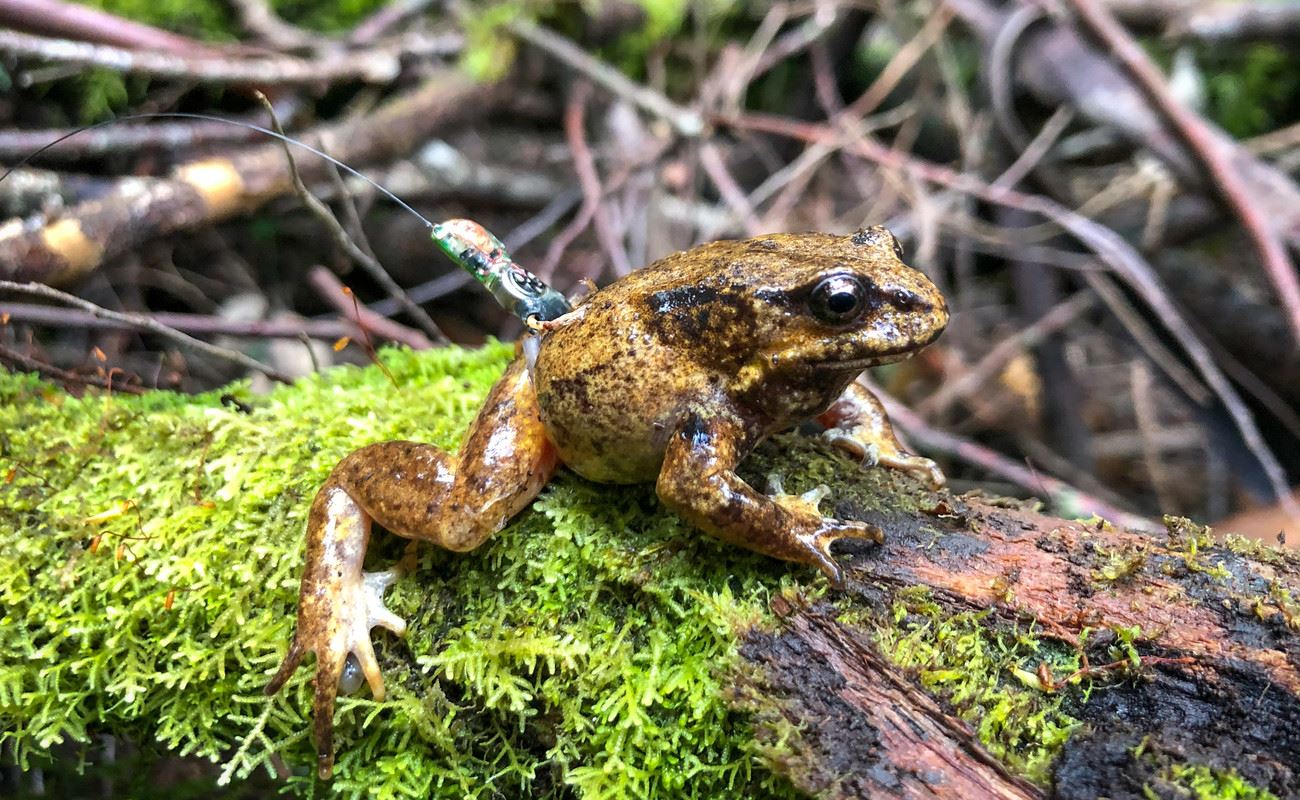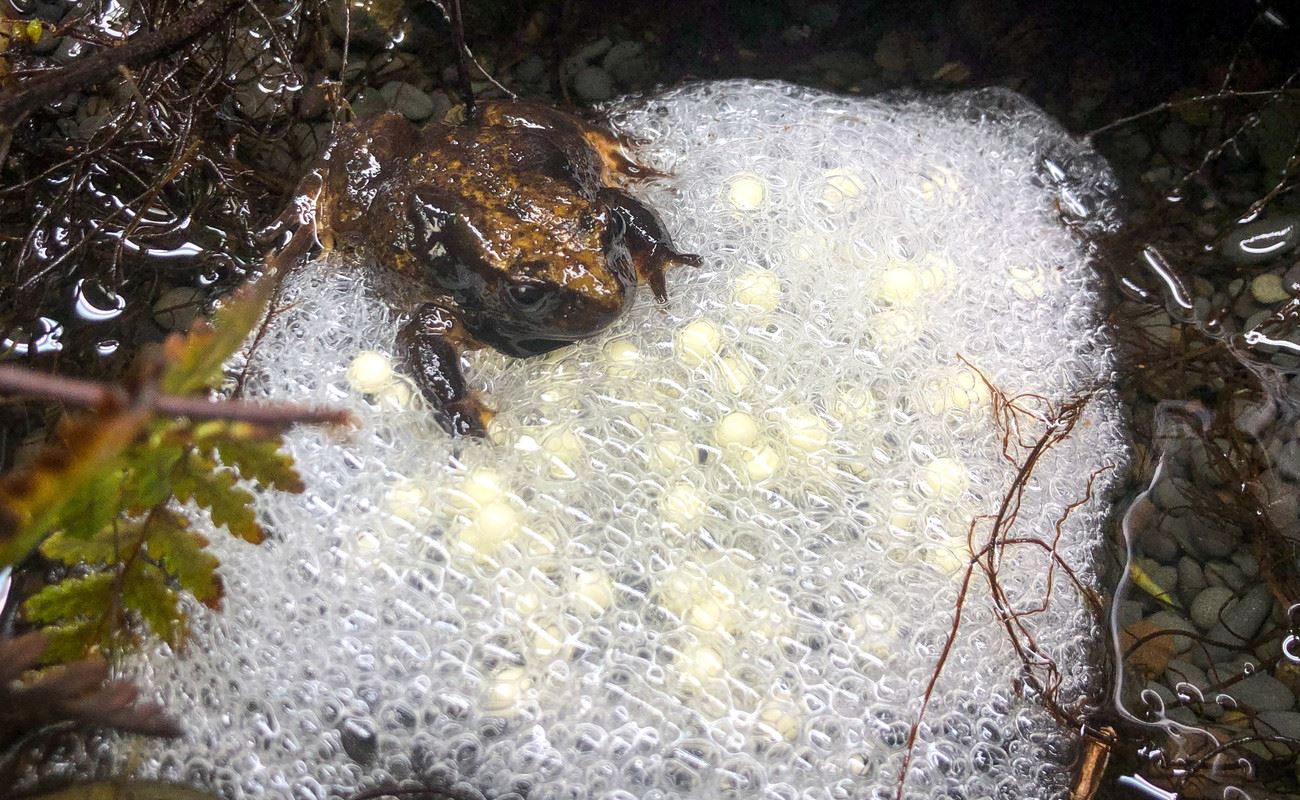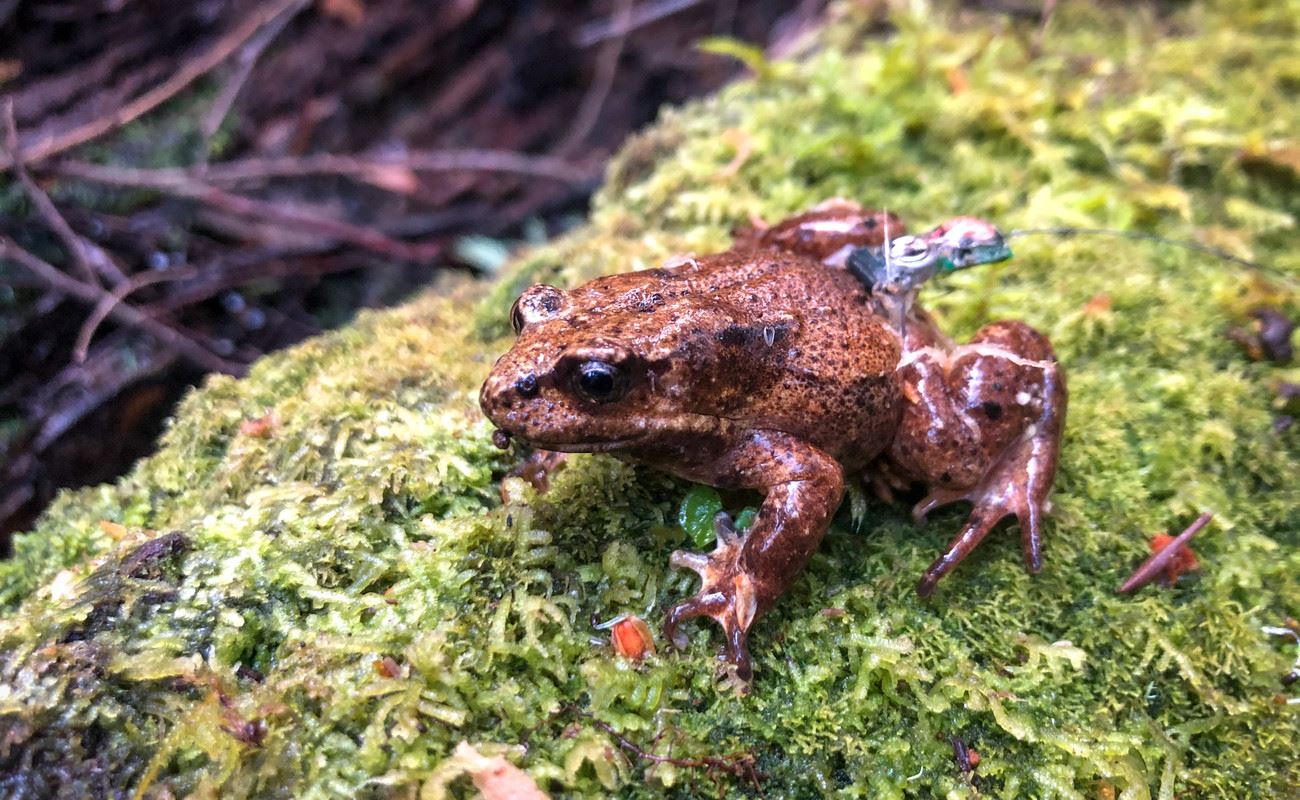New Hope for Wild Future of Critically-Endangered Victorian Frogs
In a conservation leap of faith, 50 captive-bred adult Baw Baw Frogs have been released into the wild for the first time, complete with tiny radio transmitters to track the precious amphibians.

Zoos Victoria scientists working to save the Victorian frog from extinction released the 25 female and 25 male frogs bred at Melbourne Zoo into the species' wild habitat earlier this month.
The Baw Baw Frog is the only frog endemic to Victoria, but is now critically endangered, with wild populations of fewer than 1000 confined to small parts of the high-altitude Baw Baw Plateau in eastern Victoria. Climate change and the highly-contagious Chytrid Fungus are the two greatest threats to the Baw Baw Frog’s survival.
Zoos Victoria previously achieved another world-first by successfully breeding the Baw Baw Frog in captivity, slowing the species' path towards extinction. For the past three years, the team has been releasing Baw Baw Frog eggs laid at Melbourne Zoo as part of Zoos Victoria's conservation breeding program.

Threatened Species Biologist Deon Gilbert is leading the Zoos Victoria team currently working on the Mount Baw Baw plateau, where temperatures are at times falling to almost freezing. He said the team is thrilled to be releasing adult frogs for the first time.
"These are adult frogs reared at Melbourne Zoo from eggs collected here in the wild," Mr Gilbert said. "They are being released at carefully chosen sites here on Mount Baw Baw. We know amphibians can adapt well and I am hopeful that these frogs will survive in the wild and, given that they are already adults, it would be amazing if we are able to hear frogs calling at the breeding sites next year."
Fitting the tiny radio transmitters to each frog will allow the conservation team to monitor the frogs' movement and health – only fully grown adult males in this elusive species can be heard when they call.

"If this adult release is successful, we may be able to establish wild populations faster than if we were releasing eggs alone," Mr Gilbert said. "This could give us two really strong strategies to establish new and robust frog populations in the wild.
"We are continuing our experimental reintroduction of eggs and larvae that have been laid in captivity," Mr Gilbert said. "The goal is to see if the eggs will survive and metamorphose into frogs. This is part of what will become the long-term wild reintroduction strategy for Baw Baw Frogs. From here they can metamorphose but it would then be four or five years before we hear any male frogs calling. This is why releasing adult frogs as well is so important."
Melbourne Zoo Amphibian Specialist Damian Goodall has overseen the breeding and rearing of Baw Baw Frogs at the Zoo's specialised, climate-controlled facilities since 2011, when the first wild egg mass was collected at Mount Baw Baw. He says the first ever release of adult frogs is a significant step towards ensuring a wild future for the species.
“It is certainly a huge achievement considering that just seven years ago when we started this project we didn’t know much about keeping and breeding these frogs. It is hugely important to be able to make the connection between breeding successfully here at the Zoo and then being able to do the ultimate thing, which is release frogs into the wild."
Zoos Victoria is part of the Baw Baw Frog Recovery Program, which includes the Department of Environment, Land, Water and Planning, Baw Baw Frog Recovery Team, Baw Baw National Park, Baw Baw Shire Council, Deakin University, Mt Baw Baw Alpine Resort and the University of Wollongong.
This year's project was funded with the support of the Victorian Government and the Garry White Foundation.
